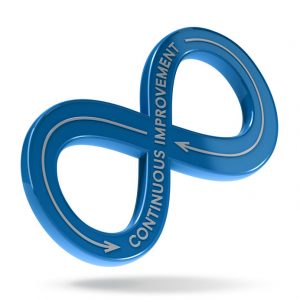

Lean Manufacturing - An Overview of the Process
Lean manufacturing is a manufacturing methodology that focuses on streamlining the manufacturing process.


The goal with it is to minimize waste – things that don’t add value to the company (from the customer’s perspective). There are 7 deadly wastes that need to be minimized:
- Overproduction
Overproduction is a waste because excess products will sit in inventory for a long time before they are needed. In order to reduce your overproduction waste, try using JIT (Just In Time) scheduling instead of ASAP (As Soon As Possible) scheduling. Using inventory management systems like the one offered by IMCO Software can drastically improve performance in this area.
2. Waiting
Waiting means that there is a gap between different steps of production. That means that a piece will wait for hours before it goes to the next step of production. In order to prevent this kind of waste, try to optimize your production schedule in order to minimize the amount of time between steps of production. If you need a scheduling tool to do this, we recommend CIMAG MES for its state-of-the-art scheduling tool.
3. Transport
The excess motion of products and raw materials is a big waste in the eyes of lean manufacturing. In order to prevent transport waste, ensure that every work order is scheduled from start to finish with no transport or waiting. A scheduling tool would work well here as well.
4. Motion
Unnecessary movement of people, materials, components, and products is another wasteful activity. To minimize this, ensure that the shop floor is designed for the movement of people and a good flow of materials, which minimizes materials’ movement and maximizes personnel productive time.
5. Overprocessing
Overprocessing is processing more than is required by the customer. This waste is difficult to detect, and the best way to minimize it is to look for simplifications to the manufacturing process. It is quite common to provide features customers don’t really need or value. If they don’t need or value them, they are not going to be willing to pay for them.
6. Inventory
Inventory waste comes from having more in your inventory than necessary. This includes products, raw materials, etc. To reduce your inventory waste, use JIT scheduling or eliminate waiting between processes.


7. Defects
Defects are anything that fails quality control. The more products you have that fail quality control checks, the more items you have in your defect waste. To reduce defects, use other lean manufacturing methods, such as root cause analysis or Jidoka. Using an MES like CIMAG MES will enhance communications between Manufacturing and Quality Control in real-time, drastically reducing scrap and rework.
It is important to do everything you can to make sure you are reducing waste in your manufacturing space.
There are also 5 key lean manufacturing principles that should be followed:
- Value
In lean manufacturing, the focus is put on the value the customer gives your product or service. If your product or service does not fulfill what customers want, it is useless. You need to think like the customer. This principle ties up close to over-processing
2. Value Stream
The value stream is a document that is used to determine where you produce waste. This document, called a value stream map, lays out the flow of material from the raw material to the finished product. The value stream is important because it allows you to see where the most significant waste occurs.
3. Flow
The goal with flow is to have the value stream be continuous – i.e. there are no stops within it and no wasted time. Interrupting the value stream wastes both time, money, and resources. Creating a value stream map will help create a perfect production flow.
4. Pull
If you have ever heard of JIT production, it has the same principles as pull. You want to ensure that nothing is made ahead of time so that you do not have a large work-in-process inventory. If you produce before it is necessary, it stops the flow of the workshop.


5. Perfection
Lean manufacturing strives for perfection in the workplace. This means that you are never done trying to improve your operations. There is always something that could be improved. The most successful operations are those that put in place a continuous improvement process.
Remember, the goal of lean manufacturing is to minimize the amount of waste in your workshop. In order to minimize waste, you should follow the 5 principles of lean, as well as reduce the 7 deadly sources of waste in your workshop.
If you have further questions about lean manufacturing and how to implement it, contact us, IMCO Software, at (904)-855-8885 x105.
More From Us
2018: The year of MES Integration
2018: The Year of MES Integration MES Software is starting to play a pivotal role in the way manufacturers operate. Decision makers in the Manufacturing...
Read MoreImproving Manufacturing Lead Time in 2023
Technological innovation is driving a fourth industrial revolution (Industry 4.0) within the manufacturing space. Forward-thinking manufacturers are transforming the production process via new and improved...
Read MoreCloud Hosted vs. Locally Hosted: Which MES Solution is the best for your company?
Cloud Hosted vs. Locally Hosted: Which MES Solution is the best for your company? Cloud Vs. Locally Hosted Manufacturing Execution System (MES) Software is one...
Read MoreLocal Manufacturing May be Set to Expand Due to COVID-19
Local Manufacturing May be Set to Expand Due to COVID-19 During these difficult times when many manufacturing companies have been forced to cease or limit...
Read More